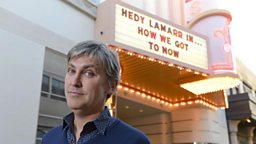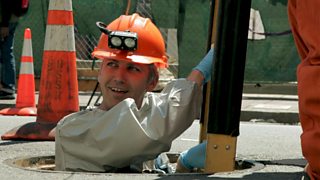Steven Johnson: "Modern life has been in the making for a very long time"

How We Got to Now had many roots. The first episode, Clean, includes the story of London doctor John Snow deciphering the waterborne nature of cholera, about which I had written an entire book, The Ghost Map, ten years ago. But the real beginning came after my 2011 book, Where Good Ideas Come From, had been released. Jane Root (former BBC Two Controller) came to me and suggested that the ‘history of innovation’ theme could make for a great series. That's when we started talking about the idea that each show would take one element from modern life - preferably something that we now take for granted - and untangle the 500 year history of how that innovation came into being, and all the crazy unintended consequences it triggered.

The future is incredibly hard to predictSteven Johnson
I think one of the big messages of the series is that modern life has been in the making for a very long time. For instance, we have an entire episode about the history of artificial cold: air-conditioning, refrigeration, and so on. That's actually a relatively short history, in the sense that we didn't have any means of making things artificially cold until the second half of the 19th Century. But the ideas that made that innovation possible - the idea that air was made up of some invisible substance that could be compressed, for instance - those ideas had been percolating for two centuries before they were applied to the first refrigerators.
We travelled all around the world making the show, which was incredible fun for the most part. We shot an entire sequence in the sewers of San Francisco - probably the most disturbing thing I've ever had to do in my life. But we also had some extraordinary access to places, including the ‘clean room’ at the Texas Instruments microchip plant in Texas, one of the cleanest places on the planet.
The ‘Ice King’ Frederic Tudor, certainly was a memorable character, if a bit of a jerk. He managed to make a fortune carving ice out of frozen New England lakes, shipping blocks of the stuff to tropical climates all around the world, as far as Bombay and Rio, in the first decades of the 1800s. For a while, frozen lake water was America's second biggest export behind cotton.
One of the lessons of the show is that the future is incredibly hard to predict. An innovation comes along designed to solve a specific problem, but it ends up triggering changes in fields that seem totally unrelated. For instance, when air conditioning was first introduced as a home appliance around 1950, it almost immediately triggered a massive migration of Americans to the tropical and desert states of the US, which in turn re-drew the political map of the country, and played a key role in the election of Ronald Reagan as President in 1980.
I'm fascinated by the history of play and recreation; the history of what we do for fun. The old cliché is that necessity is the mother invention, but I think a great deal of invention comes from another source; people enjoying themselves and pushing the boundaries thanks to their own curiosity, rather than some kind of pressing survival instinct. That would make quite a nice sequel to How We Got To Now, come to think of it.
